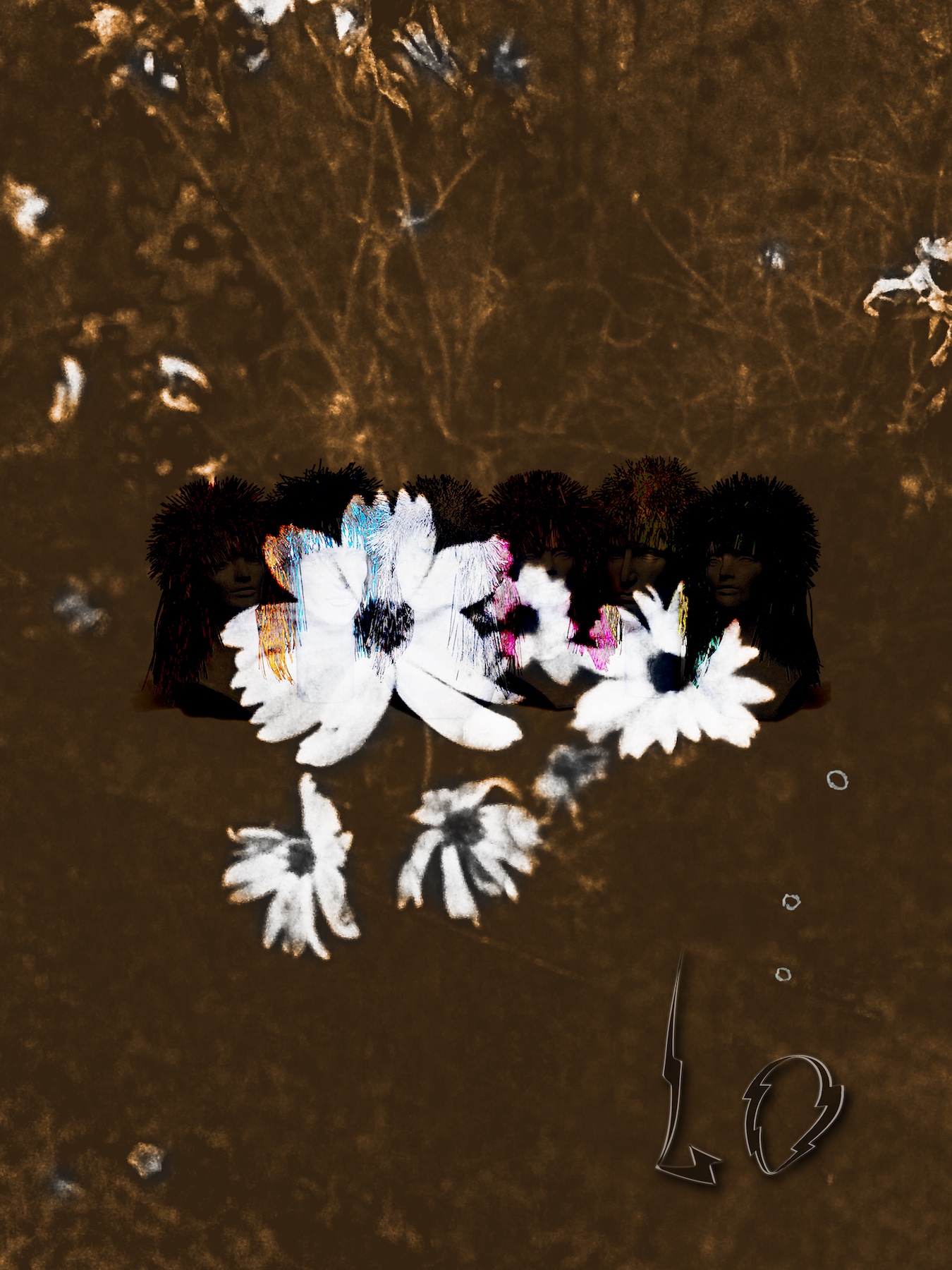
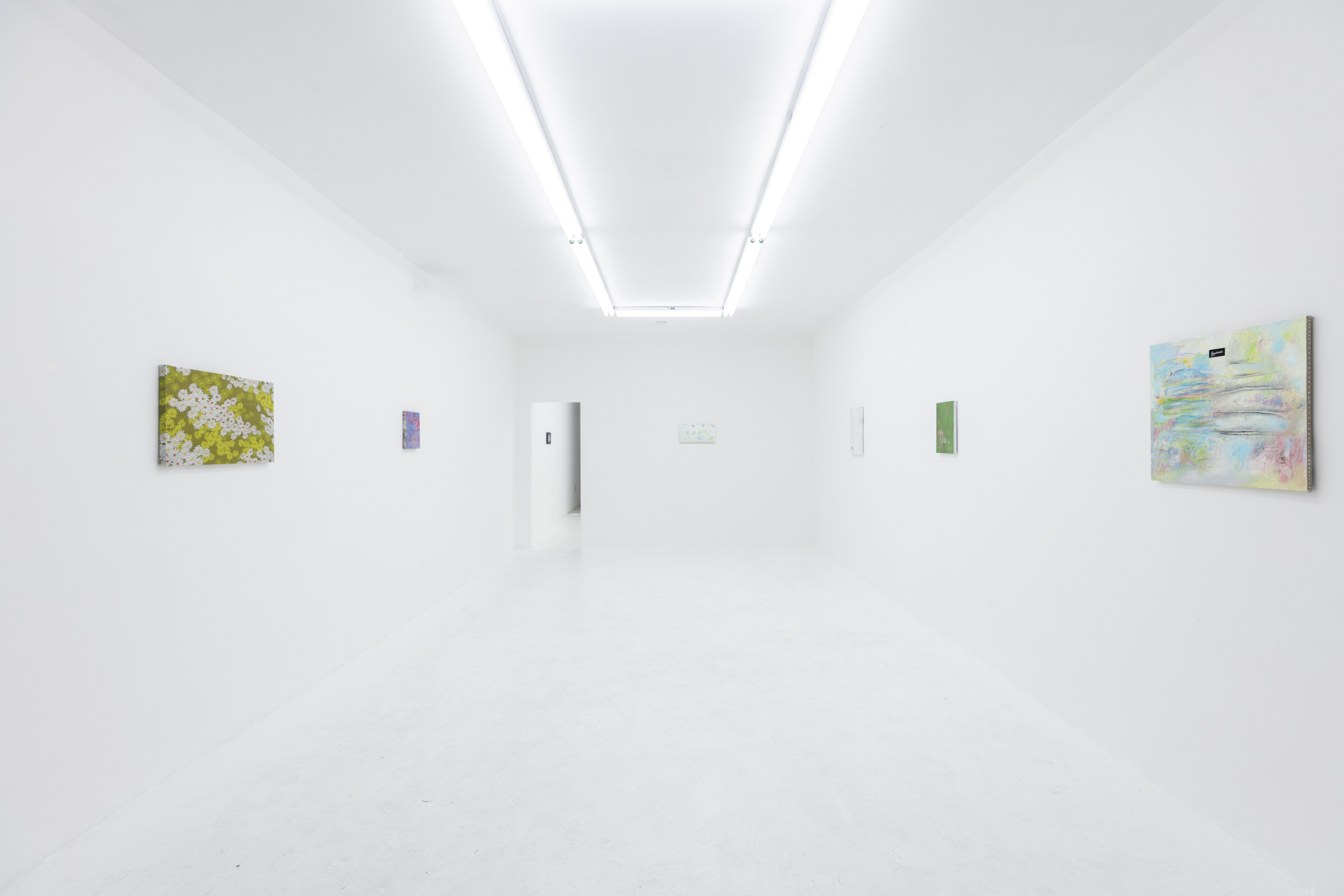
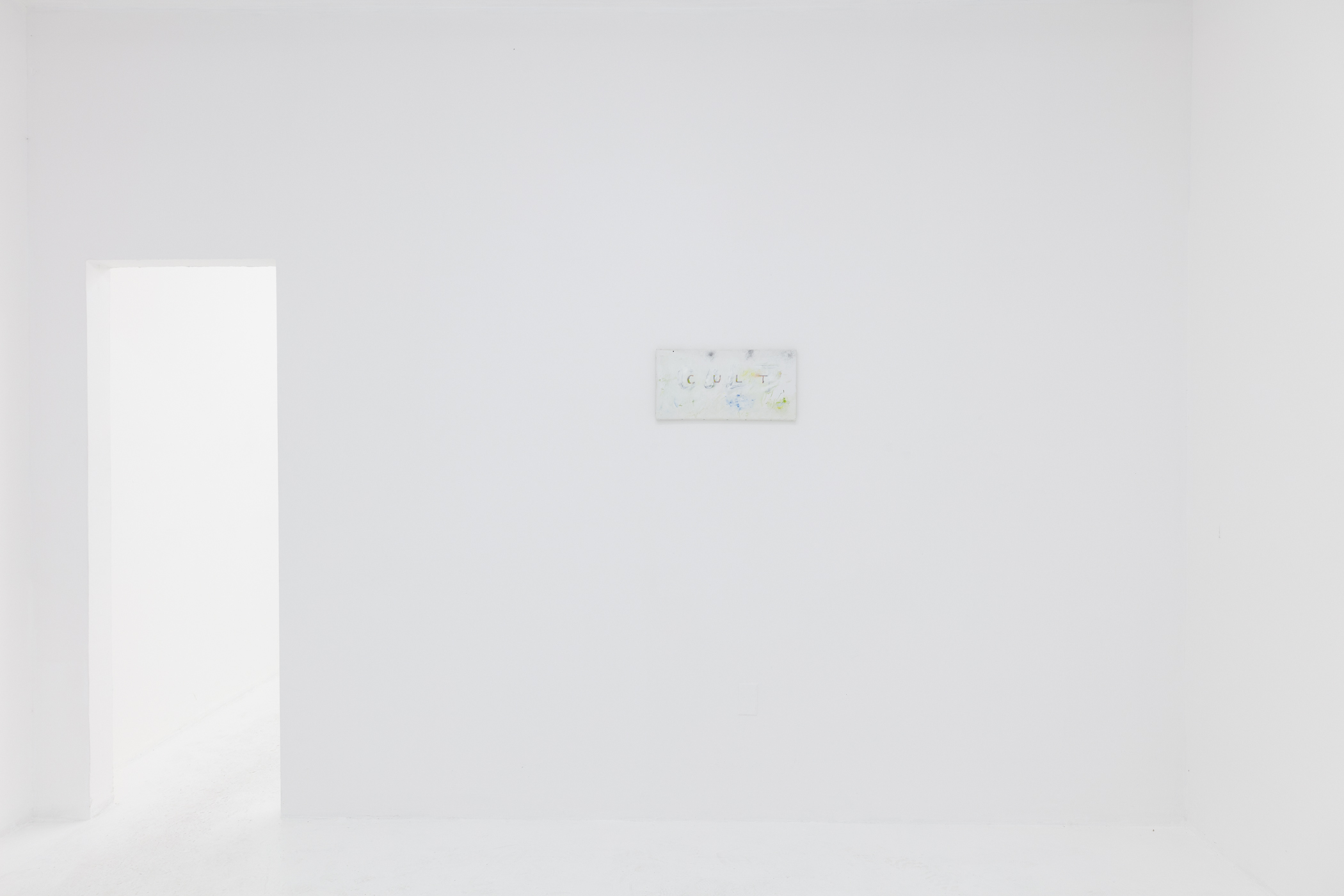
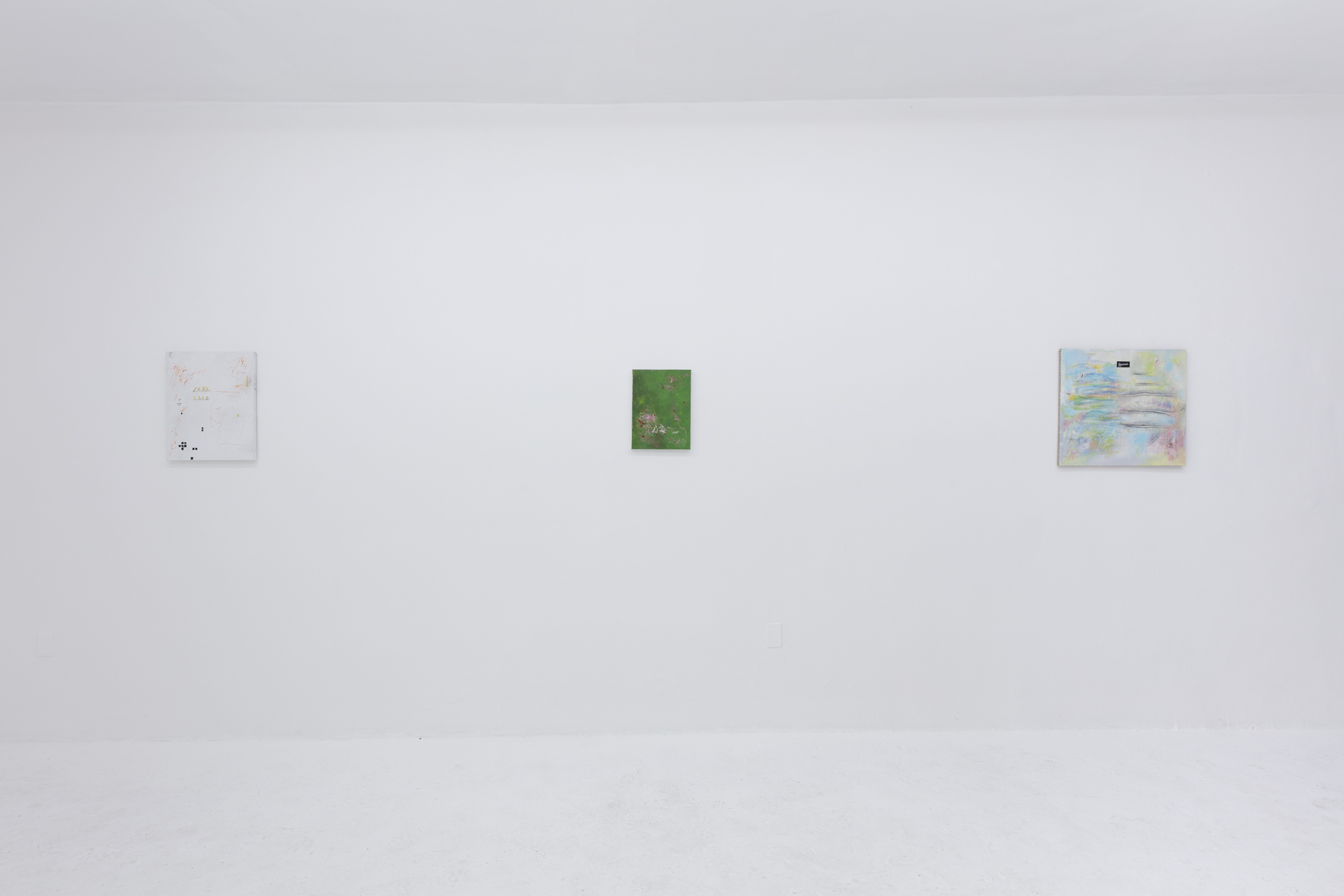
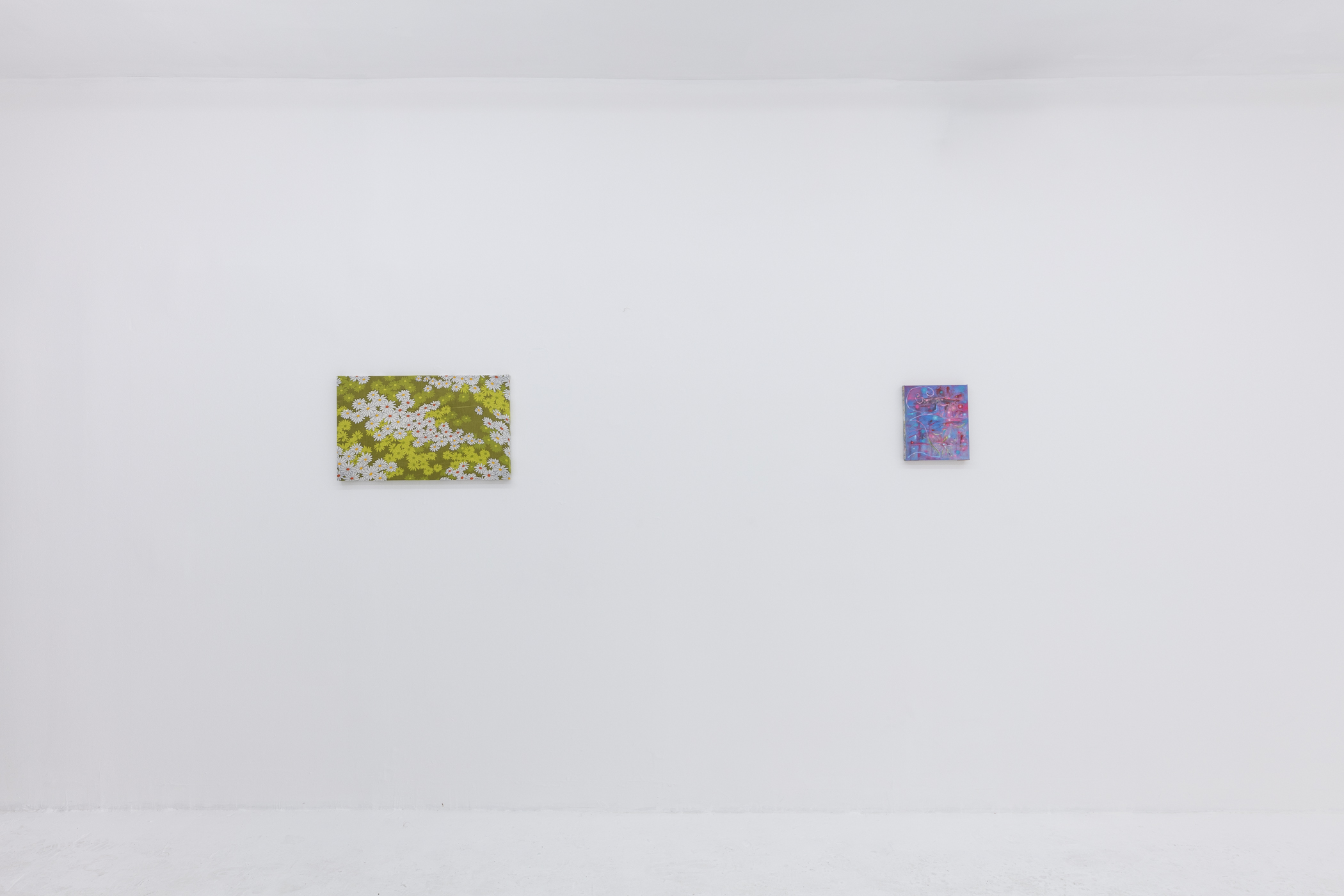
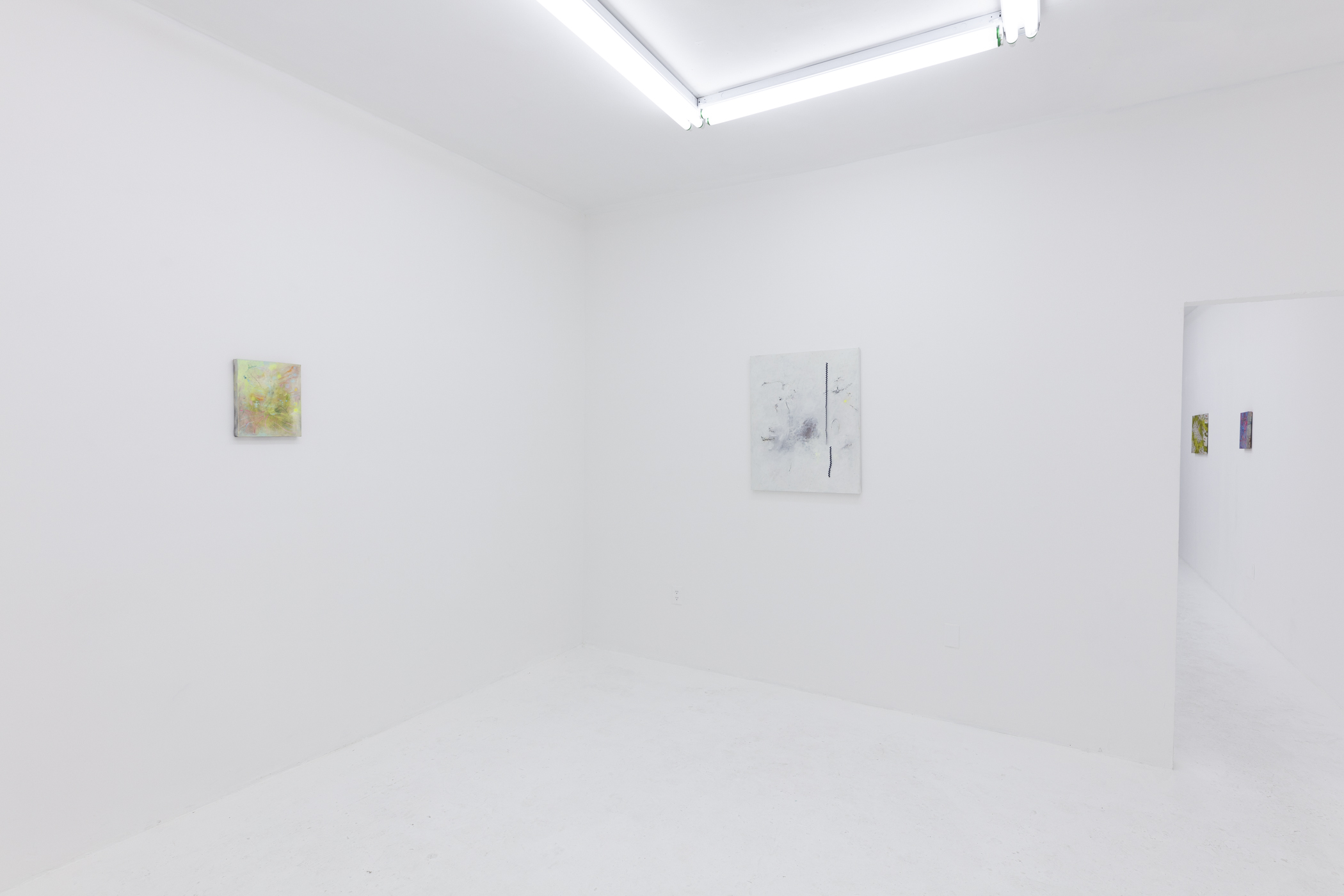
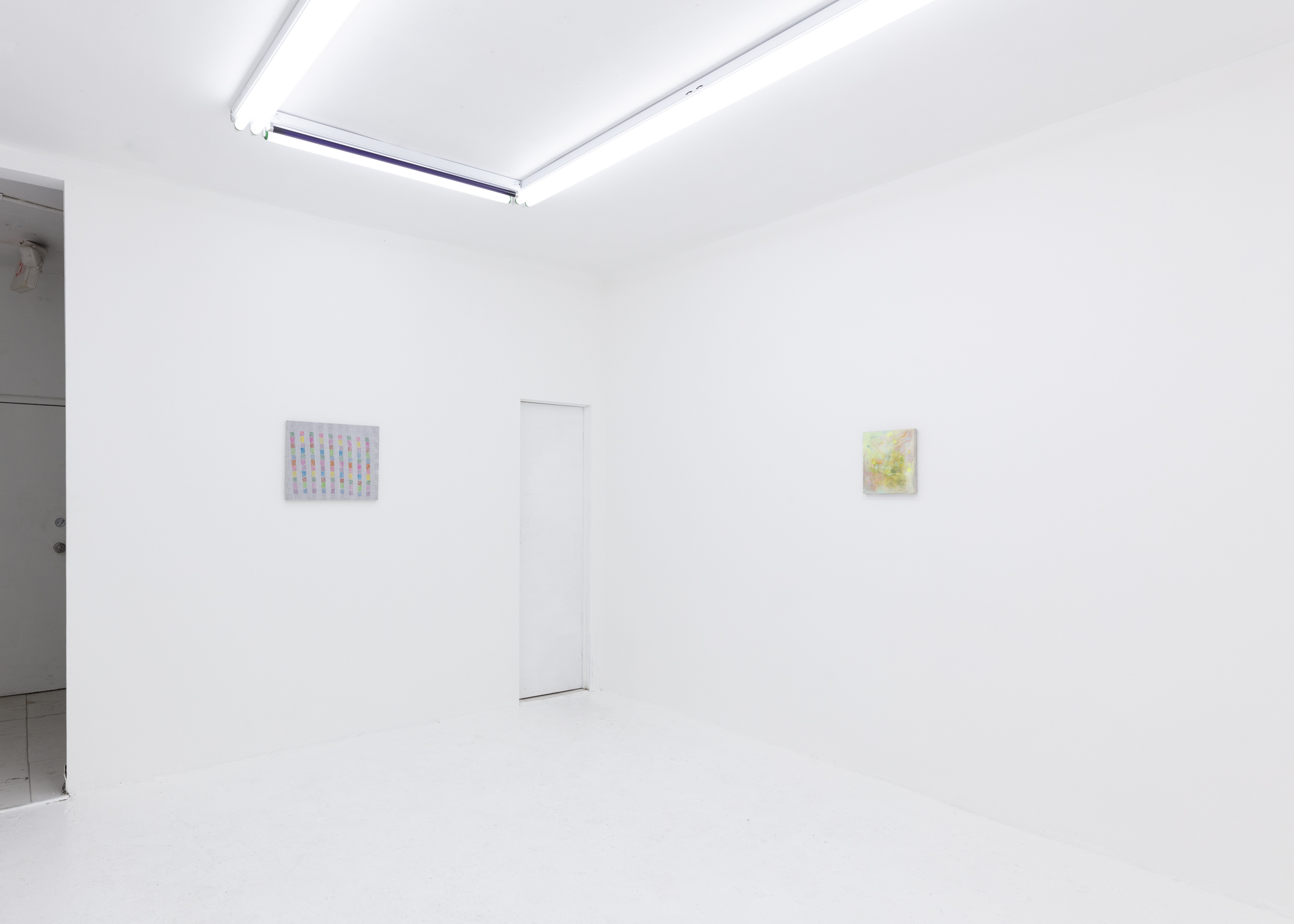
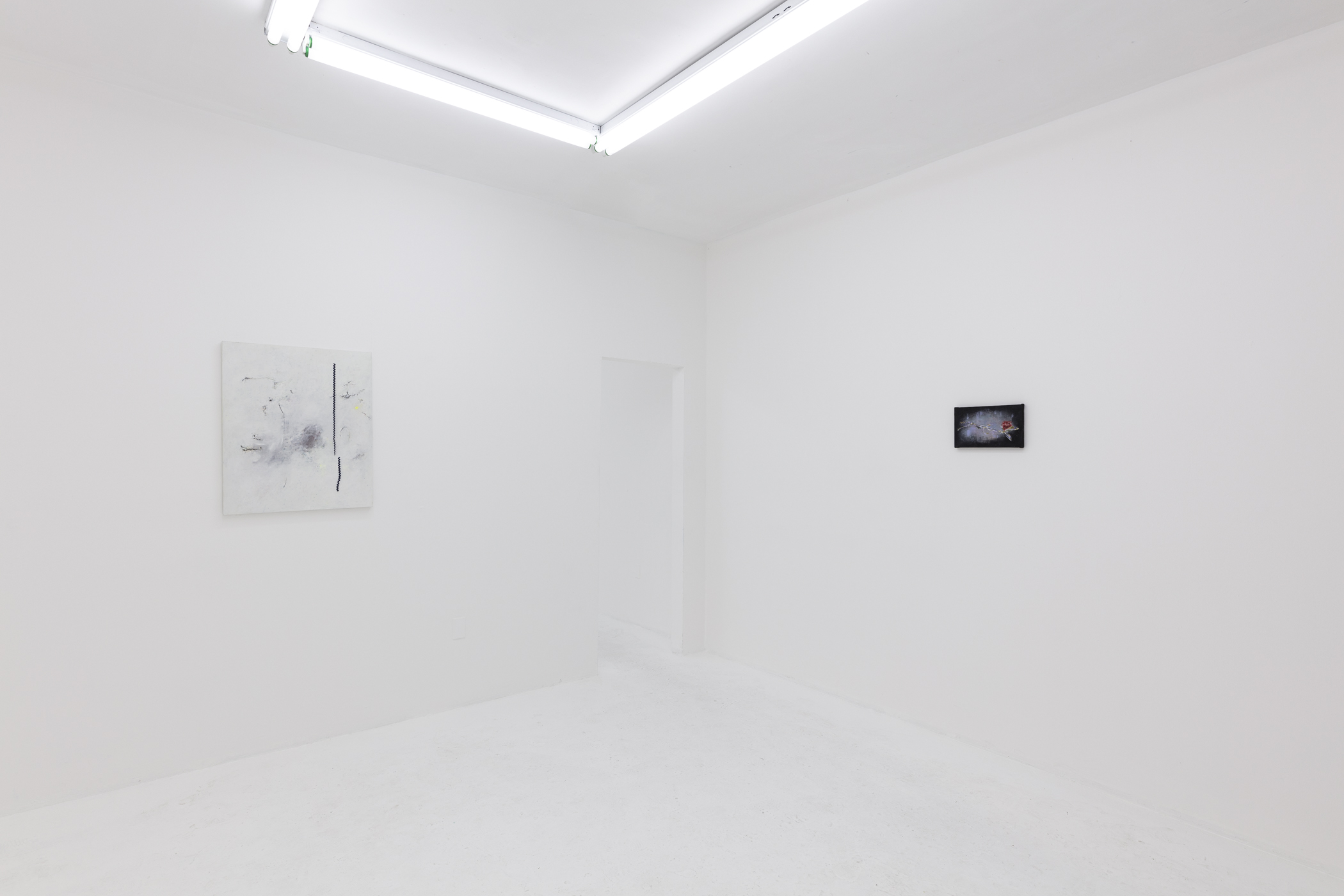
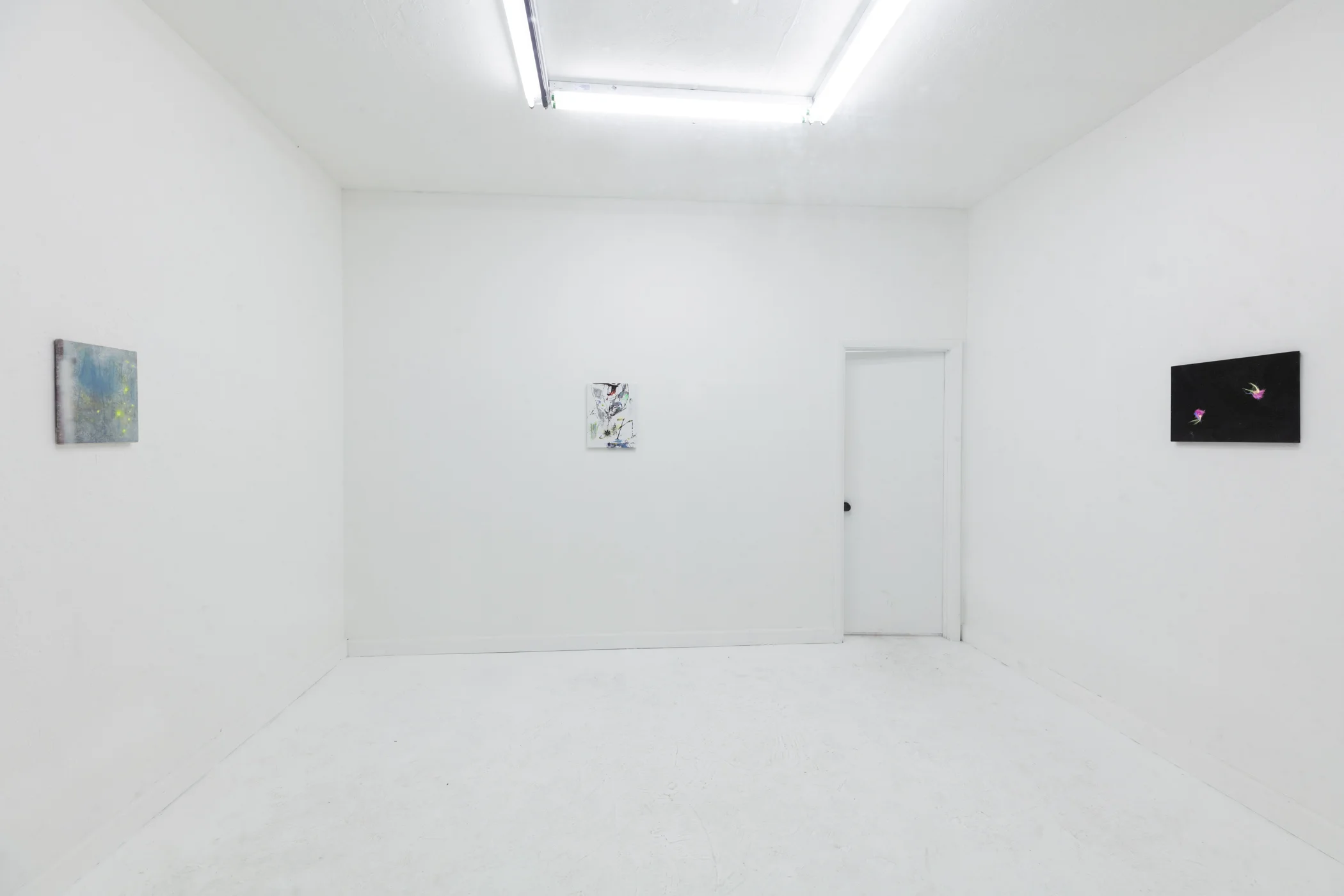
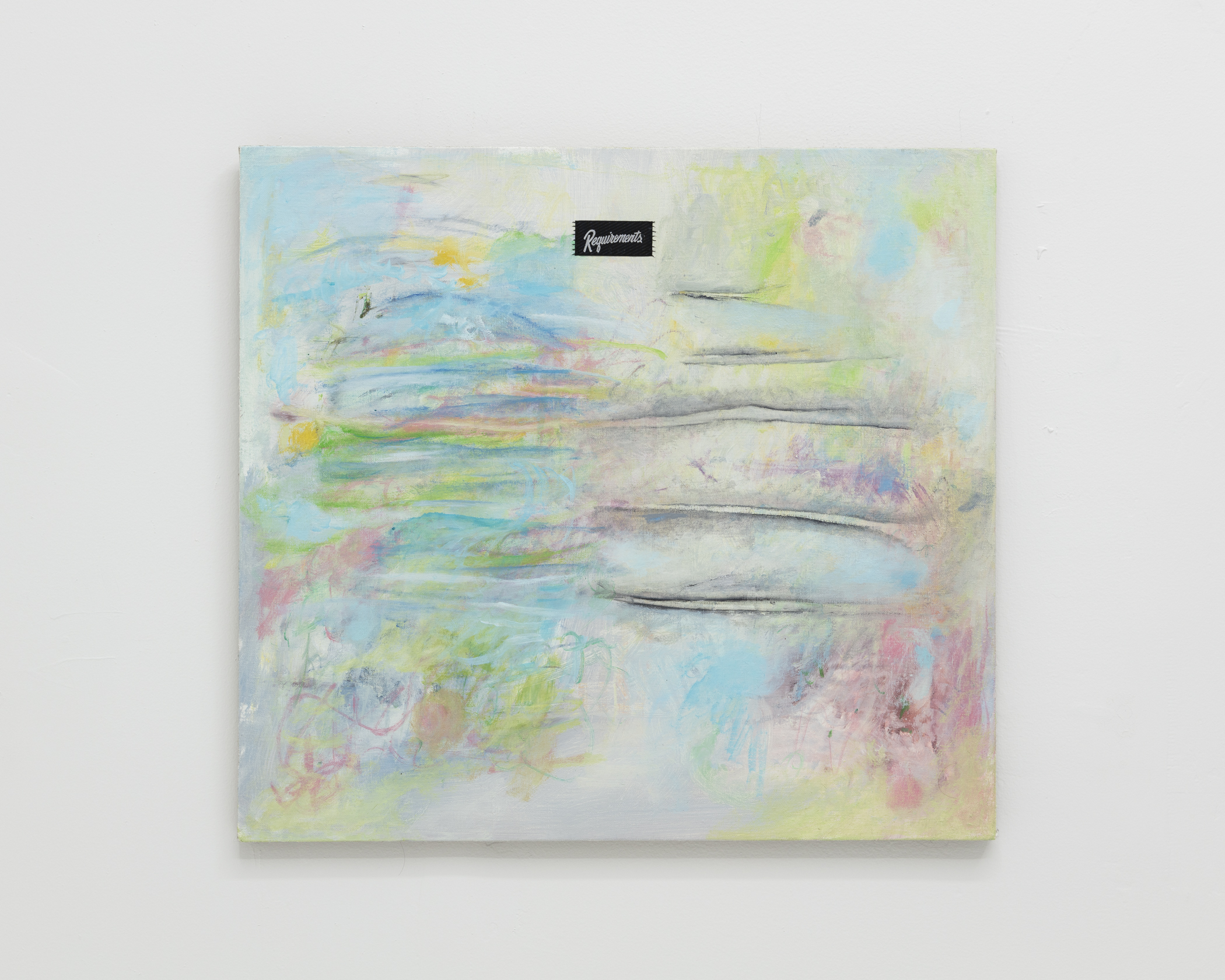
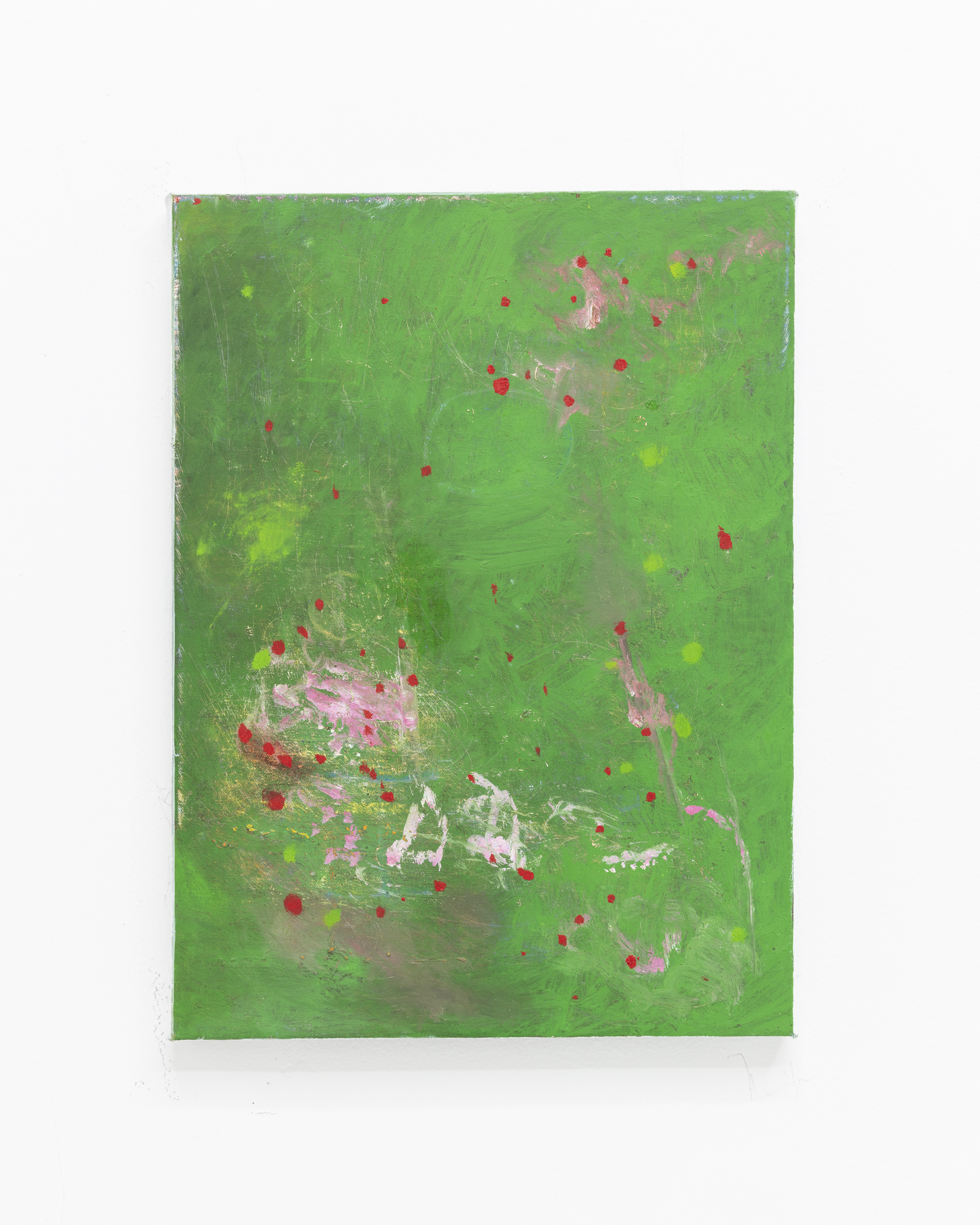
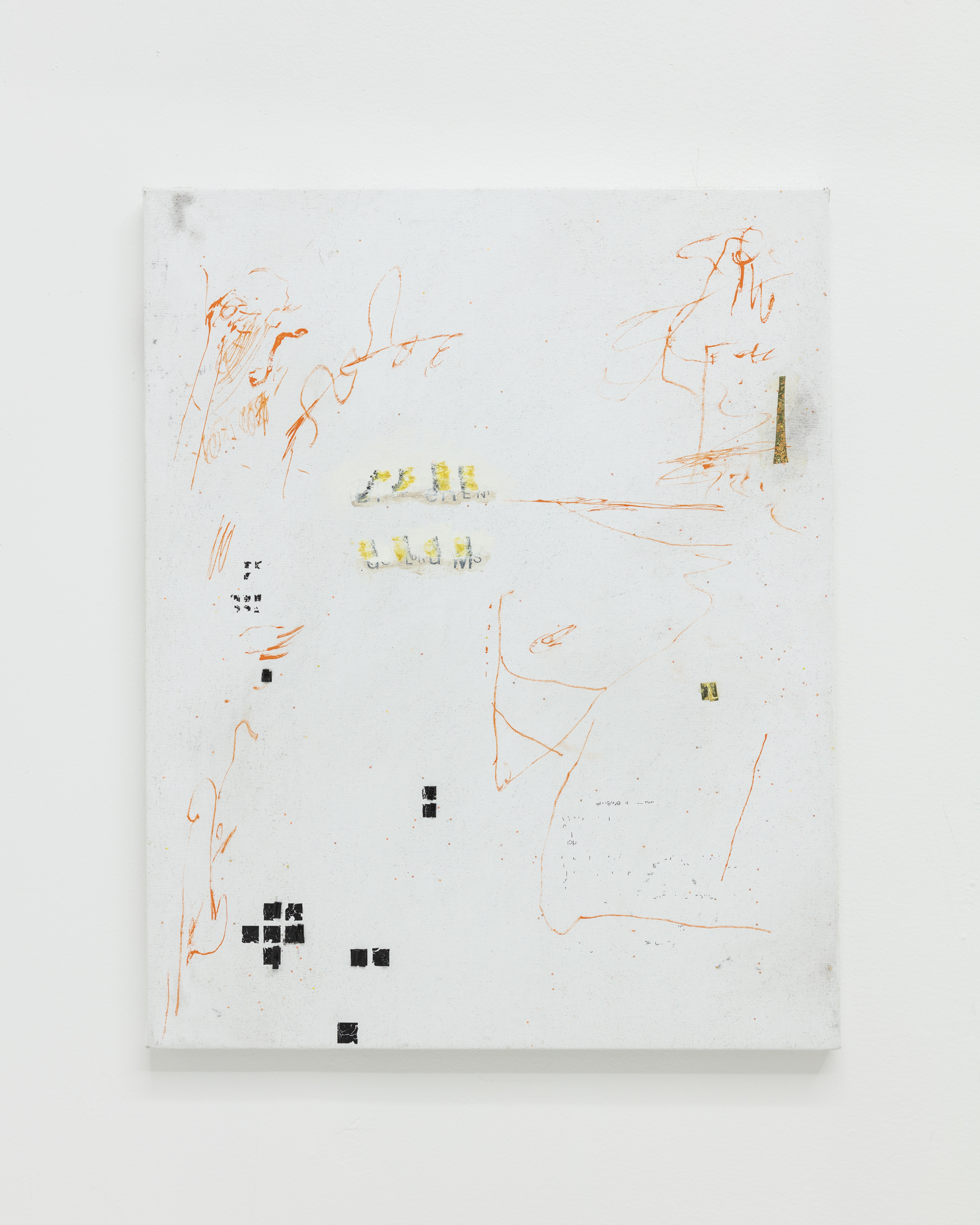
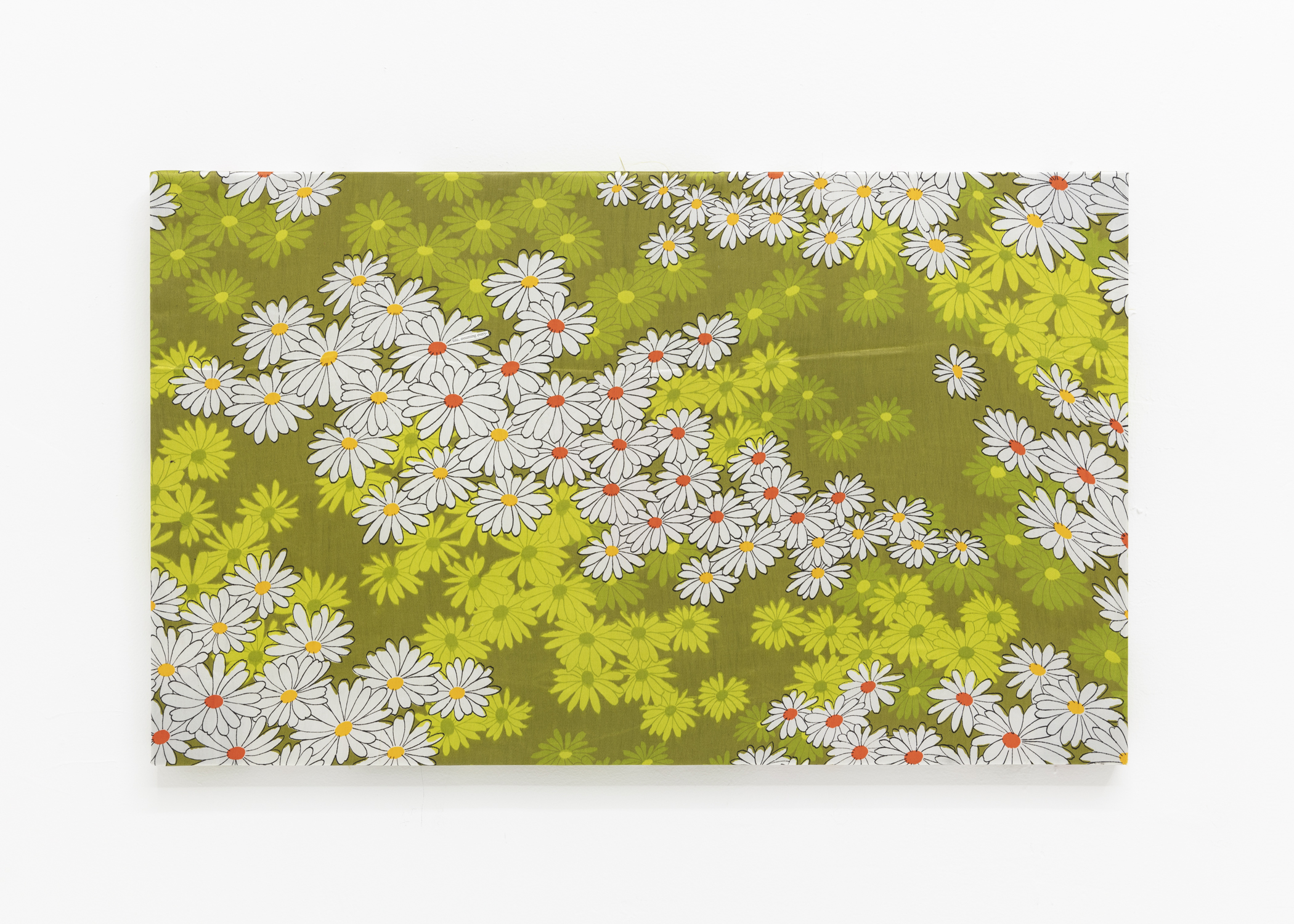
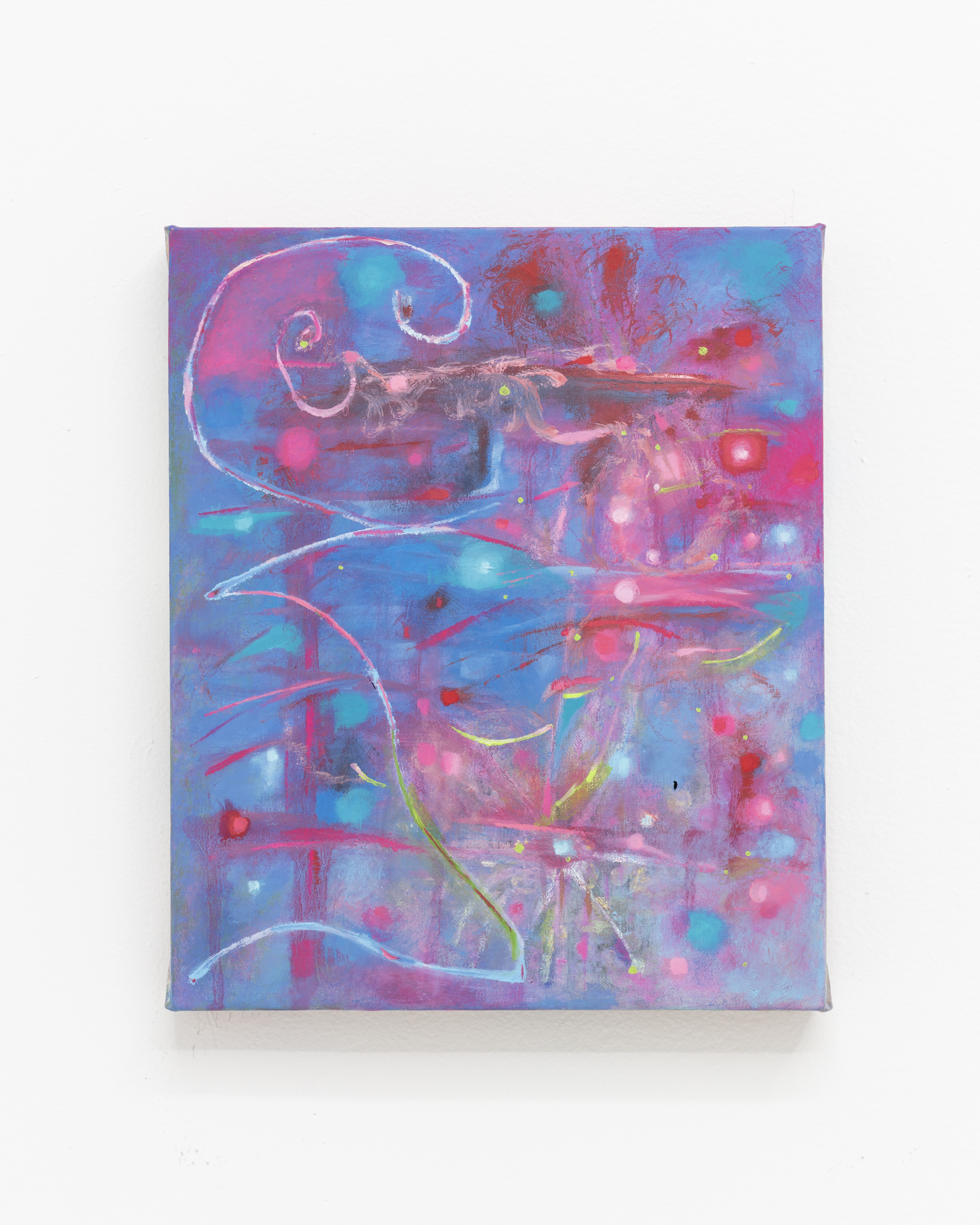
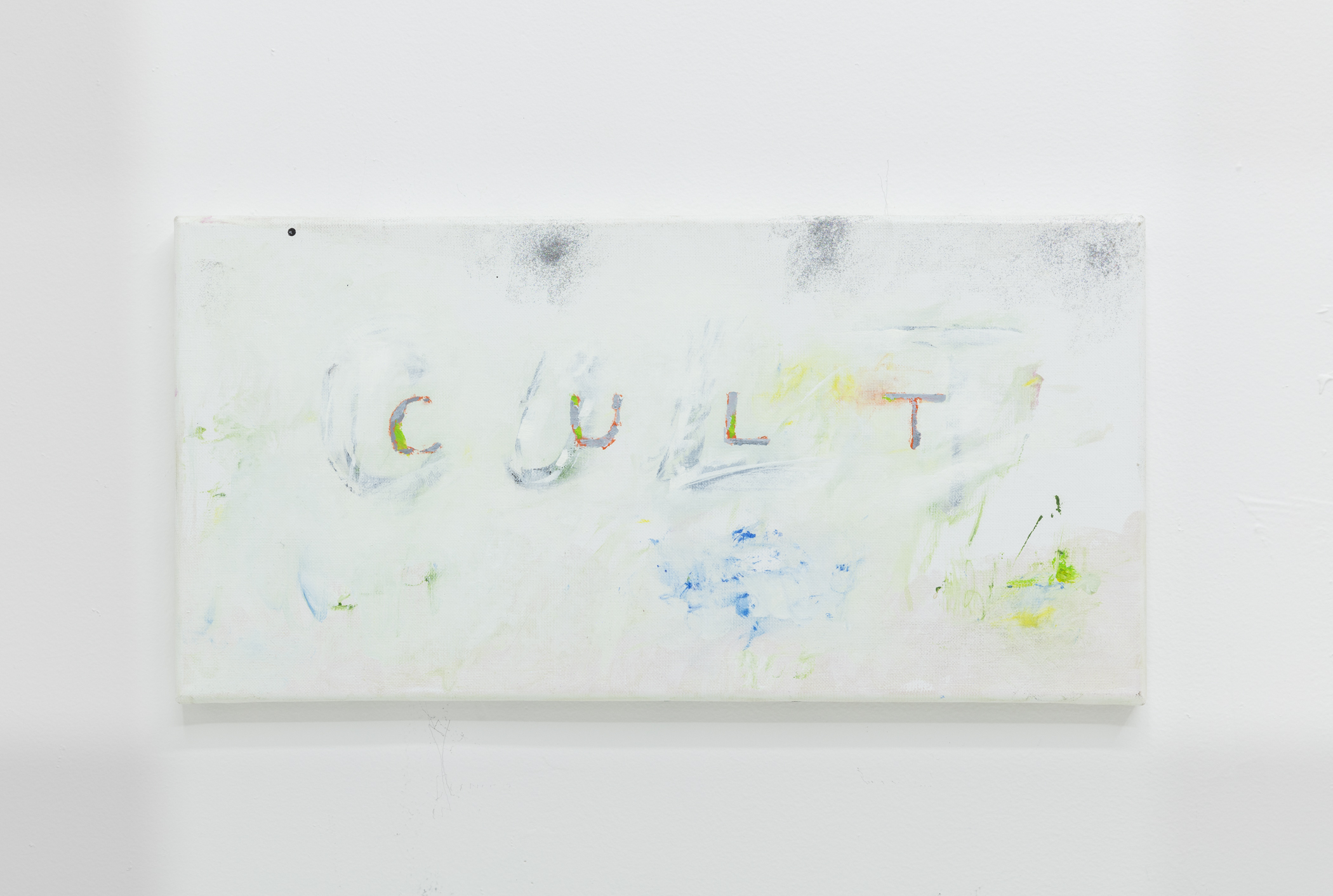
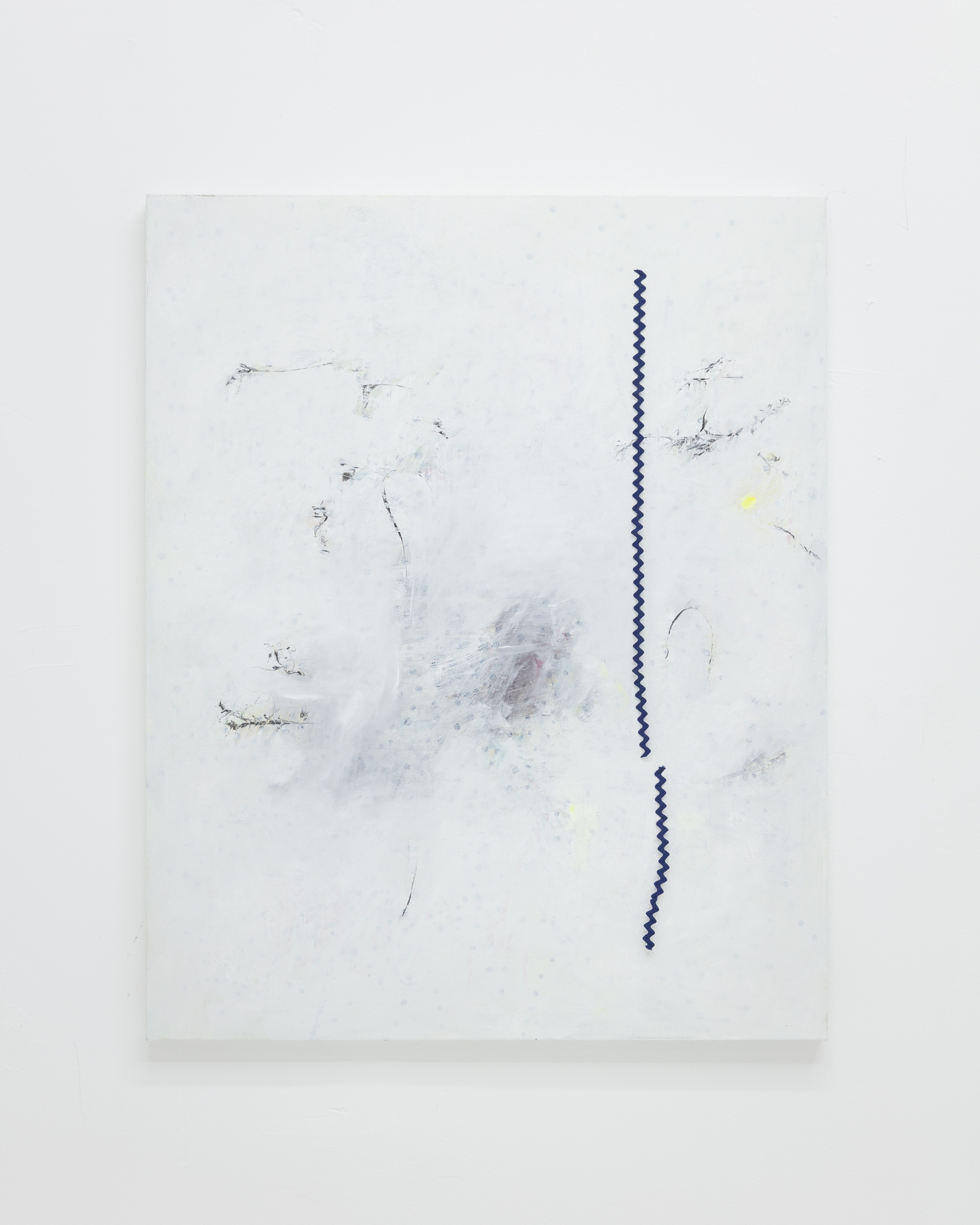
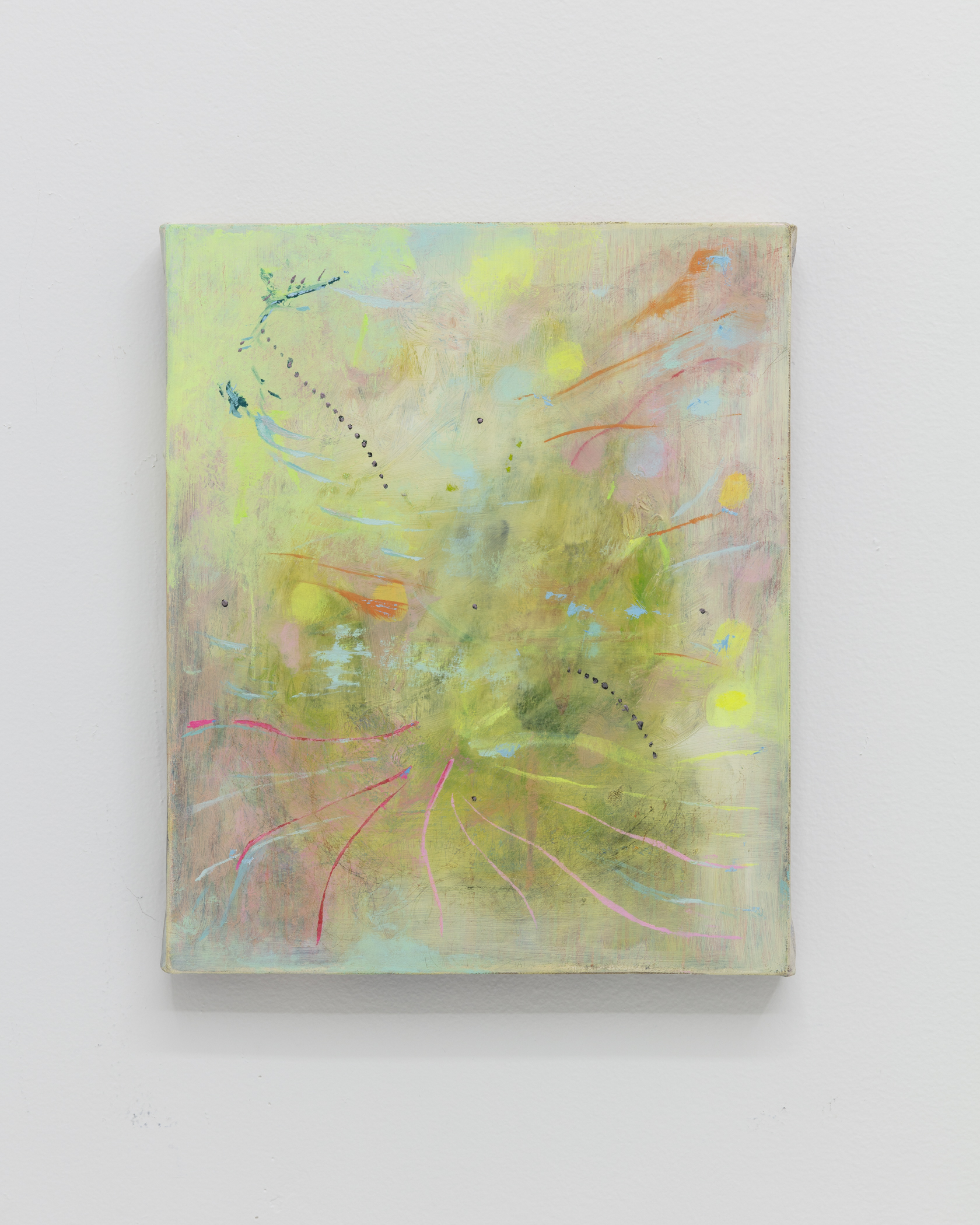
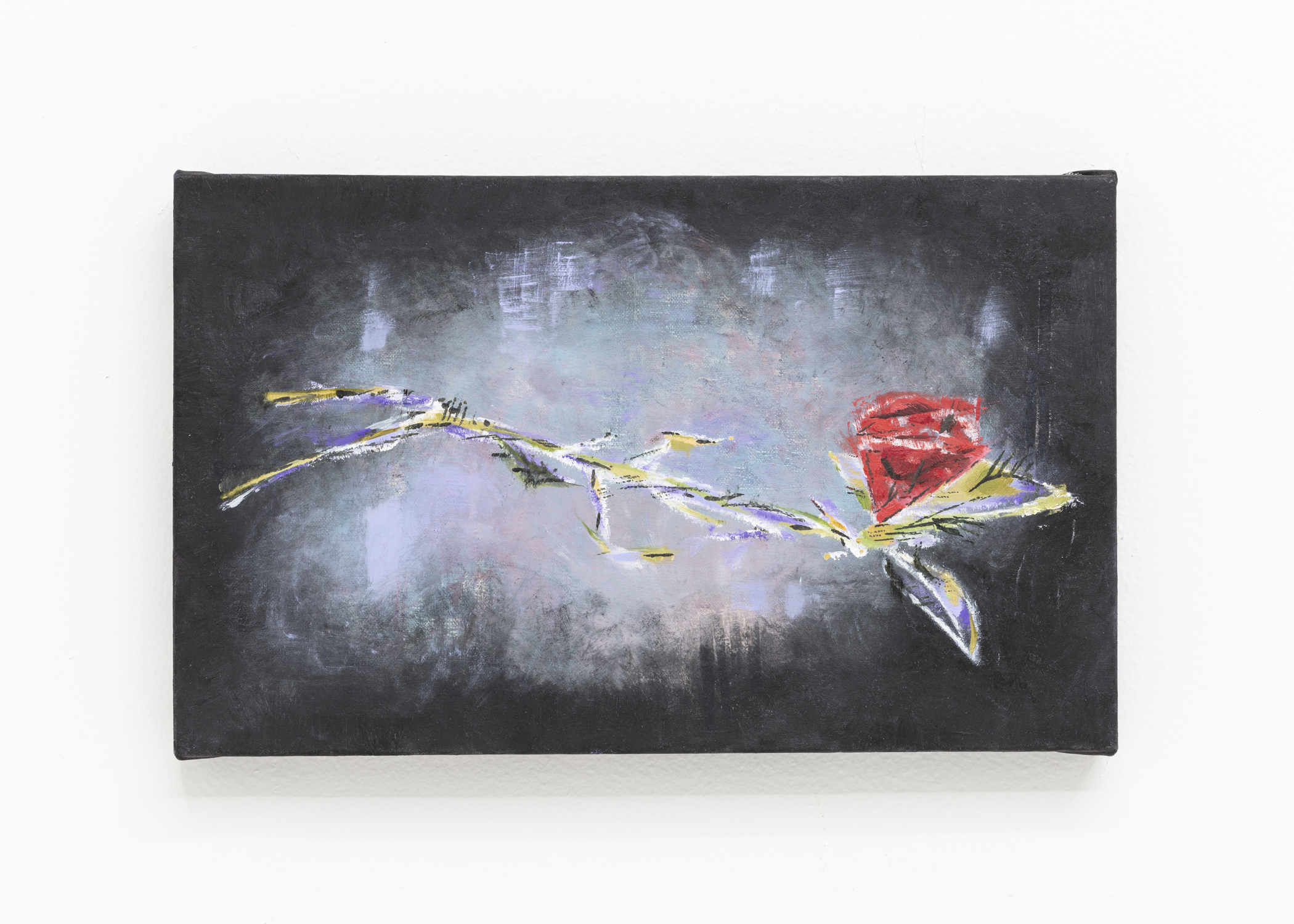
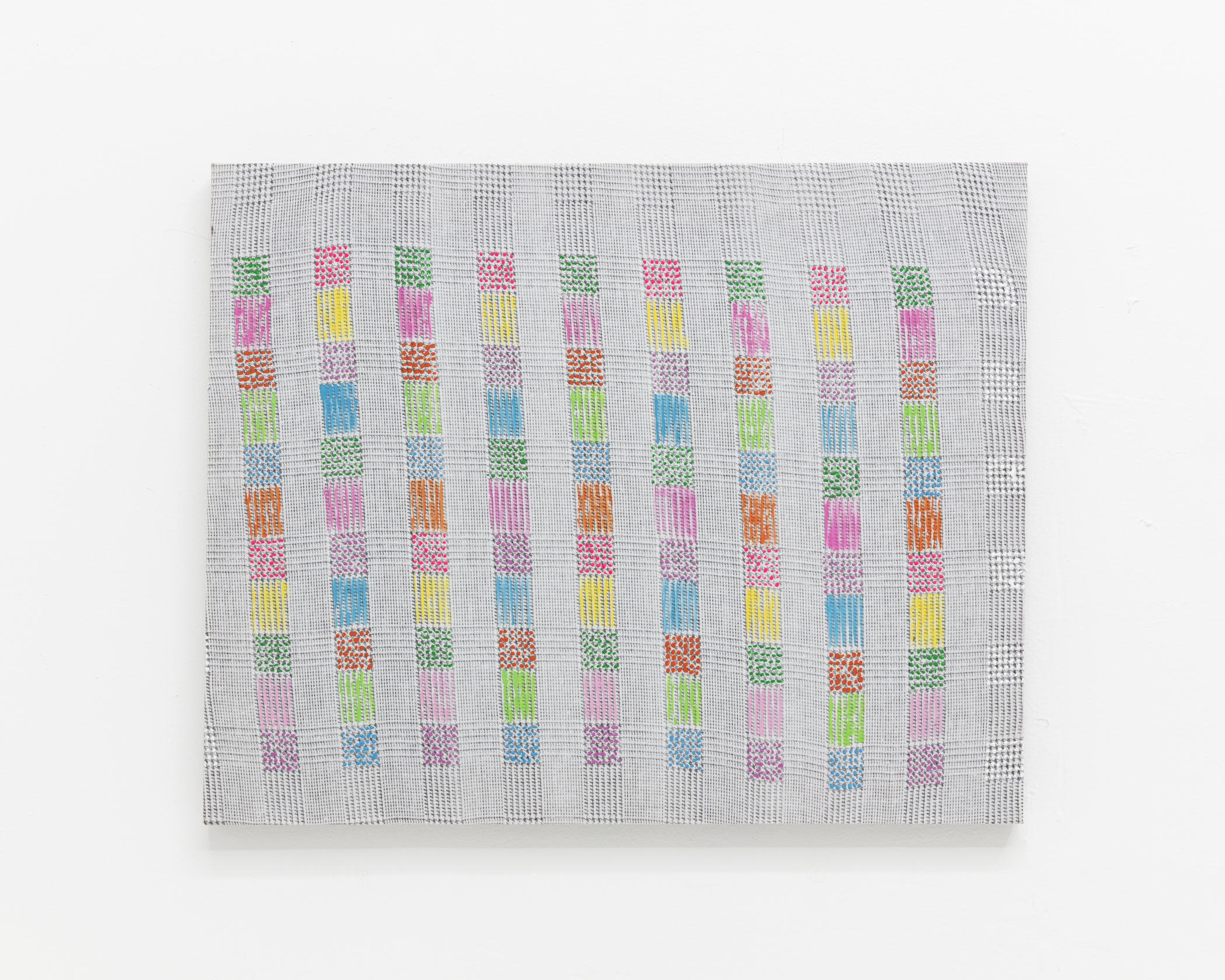
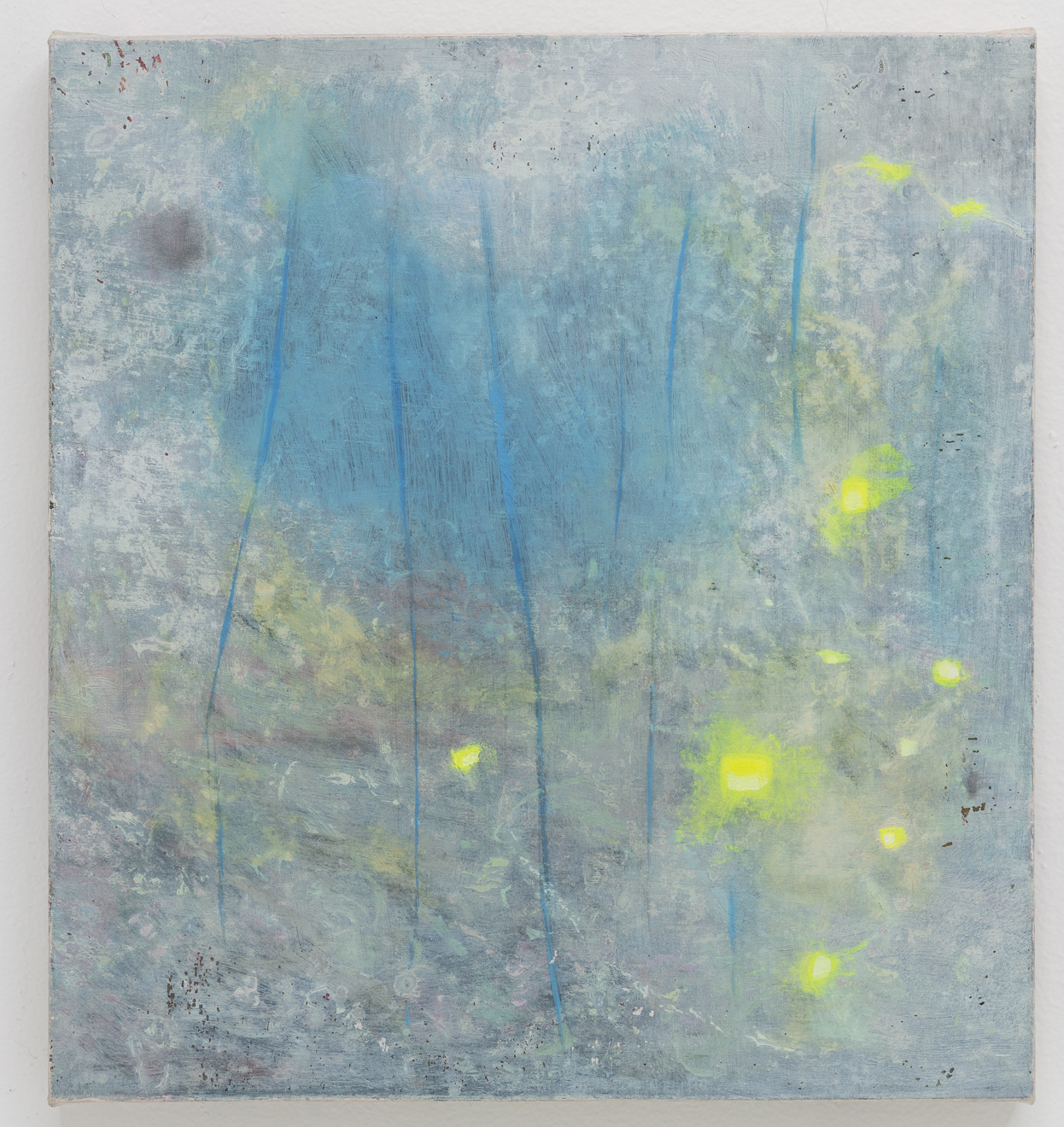
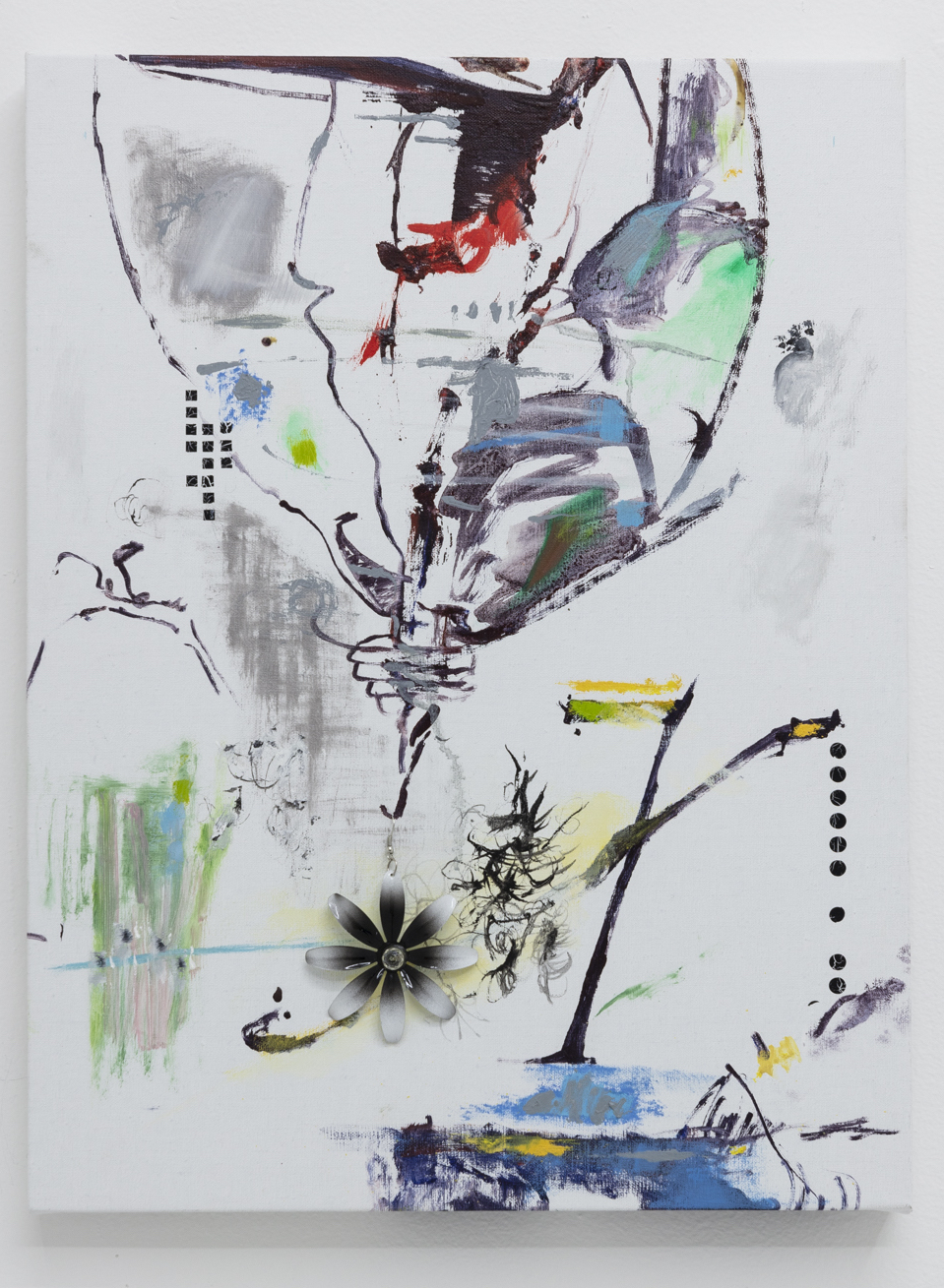
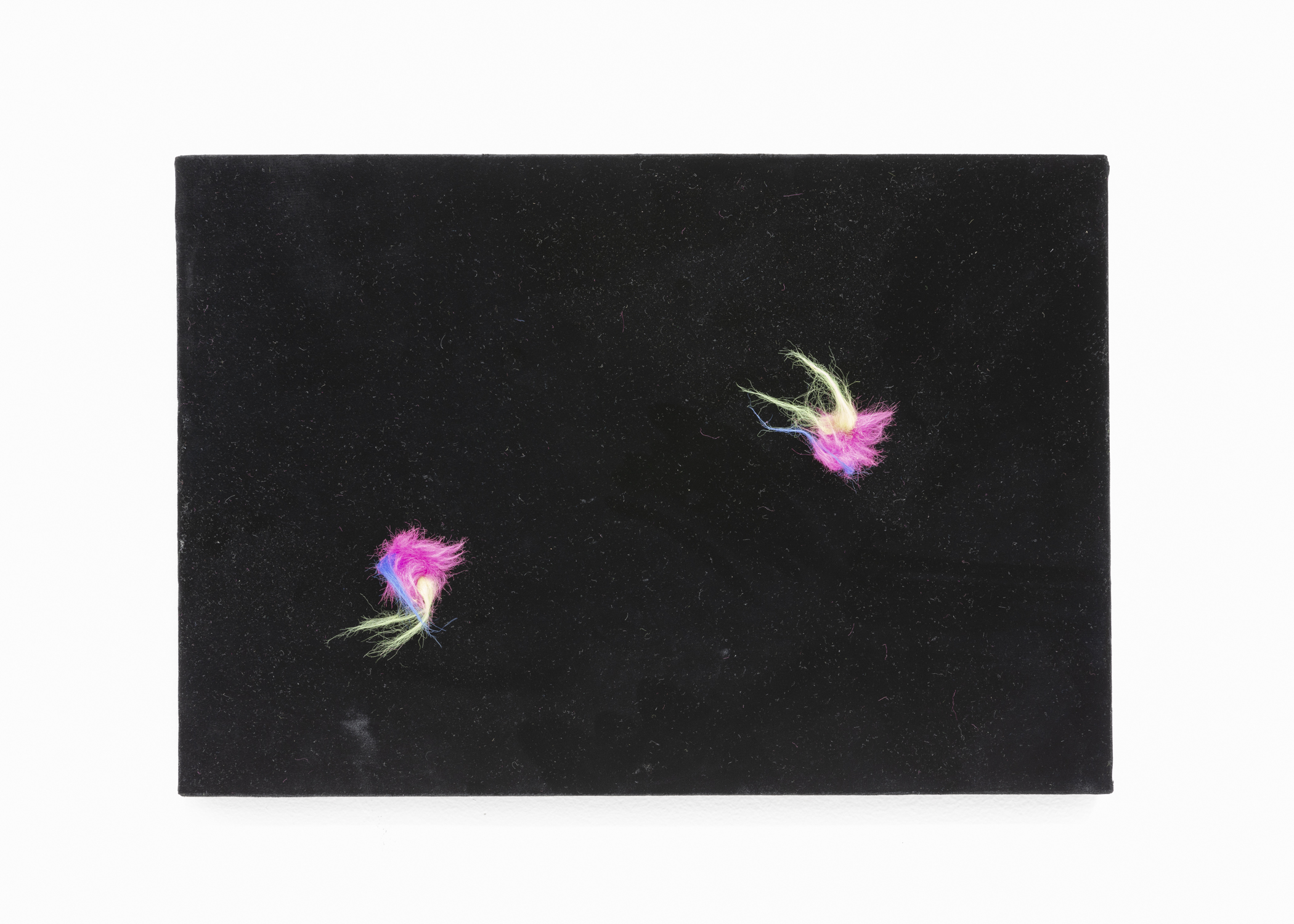
Your Custom Text Here
February 24th- March 31st, 2019
OPENING SUNDAY, FEBRUARY 24th from 6-9 PM
Squatting, lighting a candle, dancing, cooking, changing the color of light bulbs, singing, walking, painting within daylight, on occasion, under fluorescent light, accounting, forgetting, and recovering. In her solo show Lo, Whitney Claflin explores possibilities in different grammars, and addresses a sum of gaps that interconnects what one sees and how one records meaning. Claflin approaches poiesis [1] as something that stands against the stratification of the pictorial gesture, by presenting something that remains fluid.
Translation
The title Lo, in Spanish, may translate as 'that which is/was', in English. In Spanish, this ‘lo’ applies a masculinity to an otherwise neutral object—a masculine Other. What follows the article form of ‘lo’ is gender unspecified, linguistically—lo vivido, lo comido, lo danzado, lo lingüístico (“That which was lived,” “that which was eaten,” “that which was danced,” “that which is linguistic”). The noun forms of these phrases are feminine: la vida, la comida, la danza (“The life,” “the food,” “the dance”) and the adjective lingüístico is masculine (“Linguistic”).
In English, Lo recalls low, as in lo-fi, lo-res, lo-down, and so on…
Semblance
Lacan defines the Semblance as an imaginary and symbolic construction that exists beyond anatomy, genetics, etc. He defines Lalangue as a maternal tongue, pre-verbal, universal, and yet, unique to each human (We will circle back into this in a few lines).
Lo, in Spanish, could be read as a masculine Other. In Painting, due to a machismo aligned with legibility (As propagated by a political agenda in the advent of Modernism in New York in the late 40’s), we still see this Other revived in various avatars, again and again. There is a demand for what is readable and identifiable; however, in Claflin’s practice we see Semblances and planes constantly upending legibility; we witness the poetic space where the pictorial gesture meets Lalangue, emphasizing what exists beyond grammar.
Clearly, now, there is a need to question the approach to the Semblance of a praxis, and perhaps propose other possibilities. A praxis is, after all, defined through absence and possibility. That which lies outside the limits of what is art and what is not art is the very material of art; and, that which lies outside the stratification of language is the very material of language.
Painting
Claflin’s work moves beyond formal notions of challenging, overcoming, and arriving, focusing instead on an openness that emerges from experimentation, free association, and continual displacement. The holes, texts, and ‘foreign’ objects in her paintings open the pictorial and conceptual plane, allowing poetic knots or linguistic operations to signal the proliferation of the open into the open.
These paintings affirm a type of hermetic and yet hyper-open research. They consider the notion of 'the foreign', manifested as something intrinsic that oscillates between dissociation and integration, internally and intimately. The paintings lucidly register various spaces and define the trajectory of that which keeps running towards a sum of layers that collapse, re-emerge, and are (physically) rebuilt over and over. This is a type of lyrical praxis that embraces the plural, articulating both the failures and possibilities of existing structures.
Text
In the titles and surfaces of the works, we find allusions to music, a beach, a walk in a landscape, which then become narratives. The borders between imagination and memory, are not borders in these works—they coexist and are unified aspects of a viewpoint and a praxis. The paintings seem to want to be direct, and so, Lo opens and shuts down constantly, not in titillation, not sequentially, but intrinsically. What is established in one instance is vanquished or exploded in the next.
*
In Lo, there are images or graphics--wine, flowers, horizons, stars...mood clues gathered together. Text is culled from a variety of sources. Voices are distorted and reconfigured. What something means in one moment may change in the next. But this does not mean you can forget what it meant at first.
passages in italics: Whitney Claflin, Brooklyn, New York, 2019
passages in Arial normal: Diego Singh, Miami Beach, 2019
Whitney Claflin (b. 1983, Providence, RI) received an MFA from Yale University (2009). She has exhibited at Real Fine Arts, New York; Greene Naftali Gallery, New York; Croy Nielsen, Vienna; and is currently participating in a group exhibition at Galerie Buchholz, New York, until April 20th, 2019. Claflin has read poetry and performed at Real Fine Arts, New York; the Emily Harvey Foundation, New York; among other places. This is her first solo presentation at CENTRAL FINE.
1 Poiesis: the activity in which a person brings something into being that did not exist before." Poiesis is etymologically derived from the ancient Greek term ποιεῖν, which means "to make".
February 24th- March 31st, 2019
OPENING SUNDAY, FEBRUARY 24th from 6-9 PM
Squatting, lighting a candle, dancing, cooking, changing the color of light bulbs, singing, walking, painting within daylight, on occasion, under fluorescent light, accounting, forgetting, and recovering. In her solo show Lo, Whitney Claflin explores possibilities in different grammars, and addresses a sum of gaps that interconnects what one sees and how one records meaning. Claflin approaches poiesis [1] as something that stands against the stratification of the pictorial gesture, by presenting something that remains fluid.
Translation
The title Lo, in Spanish, may translate as 'that which is/was', in English. In Spanish, this ‘lo’ applies a masculinity to an otherwise neutral object—a masculine Other. What follows the article form of ‘lo’ is gender unspecified, linguistically—lo vivido, lo comido, lo danzado, lo lingüístico (“That which was lived,” “that which was eaten,” “that which was danced,” “that which is linguistic”). The noun forms of these phrases are feminine: la vida, la comida, la danza (“The life,” “the food,” “the dance”) and the adjective lingüístico is masculine (“Linguistic”).
In English, Lo recalls low, as in lo-fi, lo-res, lo-down, and so on…
Semblance
Lacan defines the Semblance as an imaginary and symbolic construction that exists beyond anatomy, genetics, etc. He defines Lalangue as a maternal tongue, pre-verbal, universal, and yet, unique to each human (We will circle back into this in a few lines).
Lo, in Spanish, could be read as a masculine Other. In Painting, due to a machismo aligned with legibility (As propagated by a political agenda in the advent of Modernism in New York in the late 40’s), we still see this Other revived in various avatars, again and again. There is a demand for what is readable and identifiable; however, in Claflin’s practice we see Semblances and planes constantly upending legibility; we witness the poetic space where the pictorial gesture meets Lalangue, emphasizing what exists beyond grammar.
Clearly, now, there is a need to question the approach to the Semblance of a praxis, and perhaps propose other possibilities. A praxis is, after all, defined through absence and possibility. That which lies outside the limits of what is art and what is not art is the very material of art; and, that which lies outside the stratification of language is the very material of language.
Painting
Claflin’s work moves beyond formal notions of challenging, overcoming, and arriving, focusing instead on an openness that emerges from experimentation, free association, and continual displacement. The holes, texts, and ‘foreign’ objects in her paintings open the pictorial and conceptual plane, allowing poetic knots or linguistic operations to signal the proliferation of the open into the open.
These paintings affirm a type of hermetic and yet hyper-open research. They consider the notion of 'the foreign', manifested as something intrinsic that oscillates between dissociation and integration, internally and intimately. The paintings lucidly register various spaces and define the trajectory of that which keeps running towards a sum of layers that collapse, re-emerge, and are (physically) rebuilt over and over. This is a type of lyrical praxis that embraces the plural, articulating both the failures and possibilities of existing structures.
Text
In the titles and surfaces of the works, we find allusions to music, a beach, a walk in a landscape, which then become narratives. The borders between imagination and memory, are not borders in these works—they coexist and are unified aspects of a viewpoint and a praxis. The paintings seem to want to be direct, and so, Lo opens and shuts down constantly, not in titillation, not sequentially, but intrinsically. What is established in one instance is vanquished or exploded in the next.
*
In Lo, there are images or graphics--wine, flowers, horizons, stars...mood clues gathered together. Text is culled from a variety of sources. Voices are distorted and reconfigured. What something means in one moment may change in the next. But this does not mean you can forget what it meant at first.
passages in italics: Whitney Claflin, Brooklyn, New York, 2019
passages in Arial normal: Diego Singh, Miami Beach, 2019
Whitney Claflin (b. 1983, Providence, RI) received an MFA from Yale University (2009). She has exhibited at Real Fine Arts, New York; Greene Naftali Gallery, New York; Croy Nielsen, Vienna; and is currently participating in a group exhibition at Galerie Buchholz, New York, until April 20th, 2019. Claflin has read poetry and performed at Real Fine Arts, New York; the Emily Harvey Foundation, New York; among other places. This is her first solo presentation at CENTRAL FINE.
1 Poiesis: the activity in which a person brings something into being that did not exist before." Poiesis is etymologically derived from the ancient Greek term ποιεῖν, which means "to make".